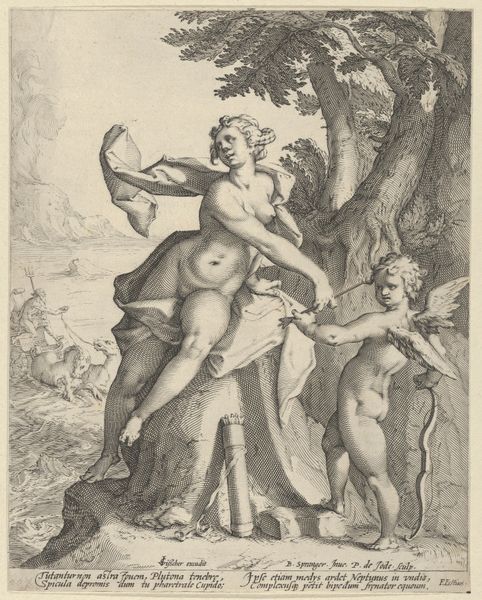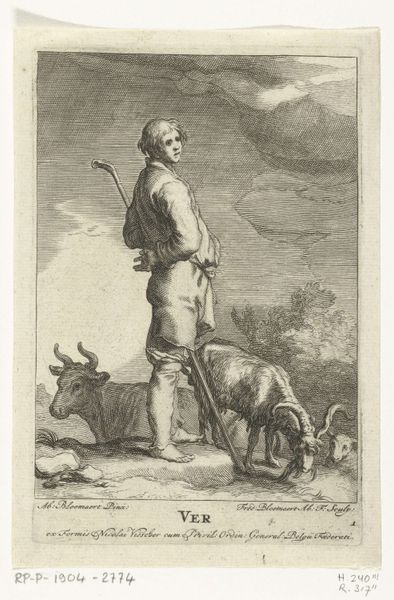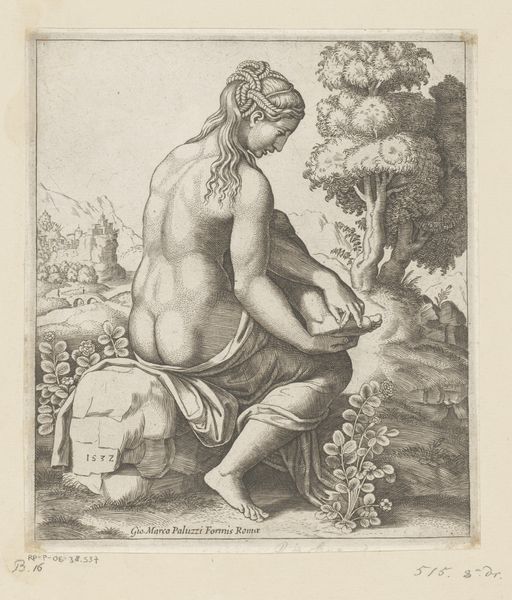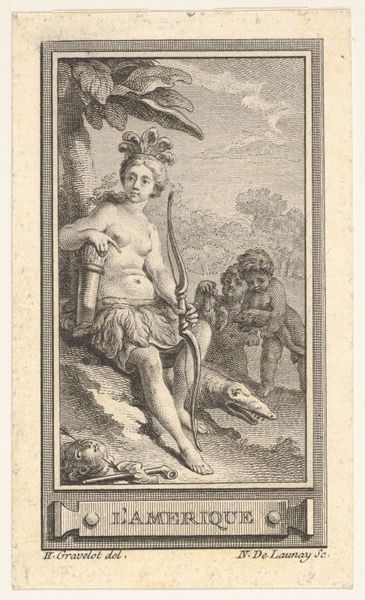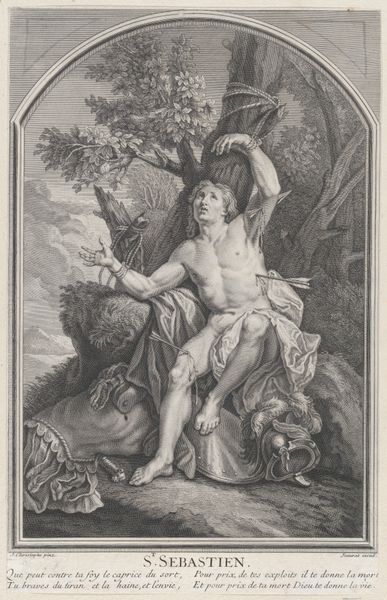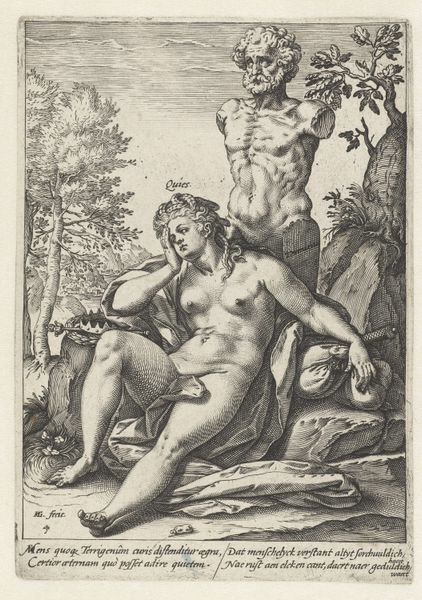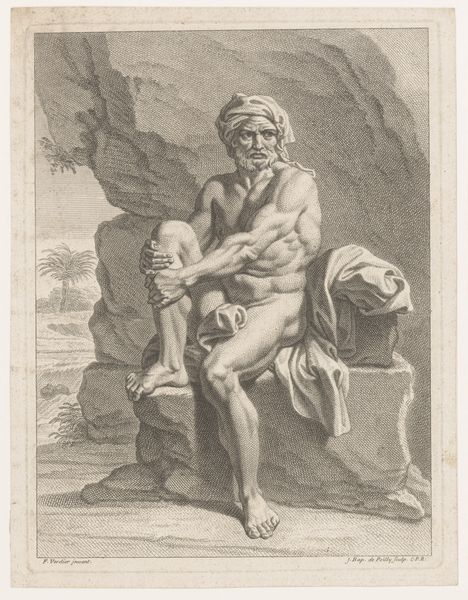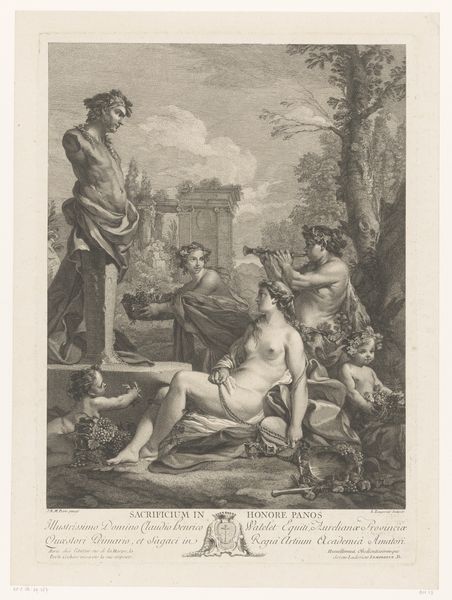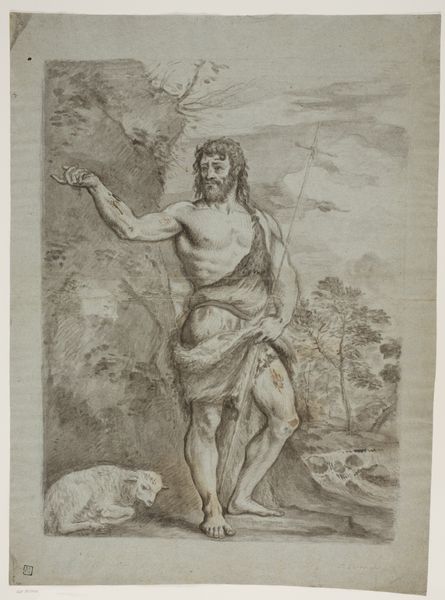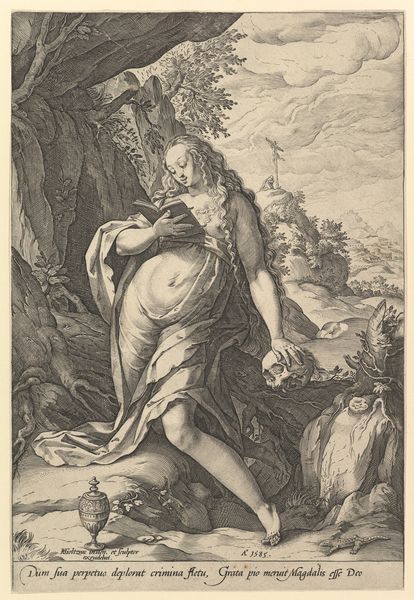
drawing, print, etching
#
portrait
#
tree
#
drawing
#
allegory
#
baroque
# print
#
etching
#
dog
#
landscape
#
figuration
#
personal sketchbook
#
men
#
portrait drawing
#
history-painting
#
musical-instrument
#
nude
Dimensions: Sheet: 8 1/4 × 6 1/8 in. (21 × 15.5 cm)
Copyright: Public Domain
Editor: This is "Seated figure of Diana the huntress" by Wenceslaus Hollar, dating back to sometime between 1644 and 1652. It's an etching and appears quite detailed. It strikes me as rather pastoral and idyllic, although Diana seems…melancholy? What’s your read on this piece? Curator: The interesting thing is to consider the cultural capital being manufactured here. Hollar, using the reproducible medium of etching, is creating an object of desire. Diana, a mythological figure, is now an item available for consumption within the rising merchant classes. Consider how the labor involved in the creation of the print – the copper plate, the acid, the press – transforms classical ideals into commodities. Editor: So, it’s less about the artistic skill in depicting Diana and more about the socio-economic forces at play in creating and distributing the artwork? Curator: Precisely. Who is acquiring this print? Why? Is it simply aesthetic appreciation, or does owning it signify something about their own status and connection to classical ideals? Furthermore, let's think about the materials: why etching? Was it readily available, cheaper than engraving, and what kind of workshop would have been needed to produce and circulate these prints? Editor: I see. So, it’s a lens to understanding class, access, and how even art depicting goddesses becomes part of a production cycle. Does knowing that affect our reading of the overall scene, its symbols of nature and the hunt? Curator: Absolutely. These seemingly romantic details—the landscape, the dogs—become props in a theatrical staging of power and possession. It isn't simply about Diana; it's about what her image signifies within this developing market-driven culture. Editor: That really changes my perspective on the piece! I was focused on the beauty and mythological aspects, but now I see the commentary on consumption. Curator: Indeed. Looking at the art world from a materialist lens can expose some interesting realities.
Comments
No comments
Be the first to comment and join the conversation on the ultimate creative platform.
